The ocean is a pretty frightening place. Just pondering the vastness of Earth’s oceans can inspire fear, but there are also many dangerous animals that can be found there. Maryland’s Oceans are no exception and are home to some remarkable and deadly creatures. In this article, I will explore 10 of the most dangerous animals found in Maryland’s Oceans and give you some tips on how to avoid encountering them!
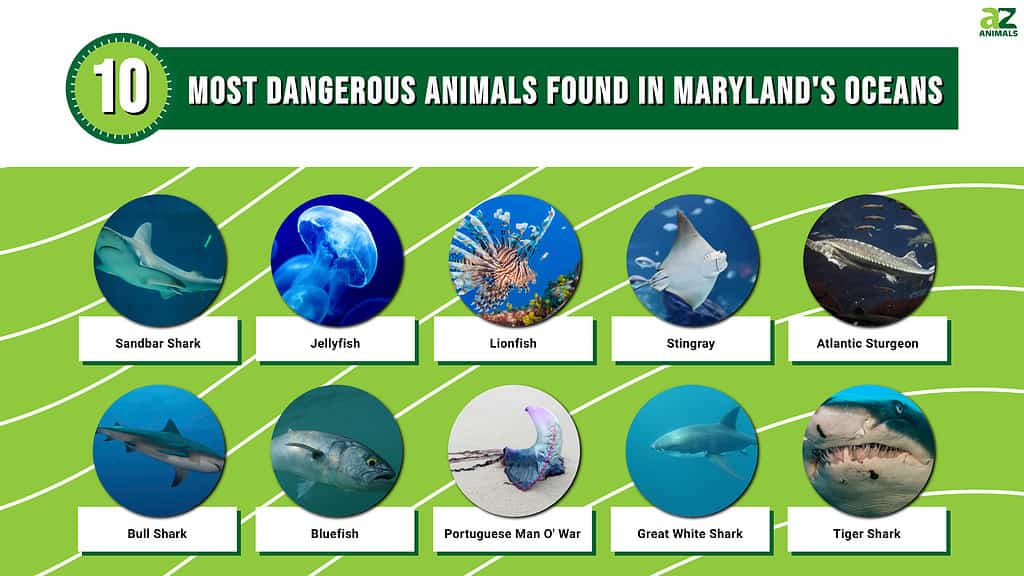
Are Maryland’s Oceans Dangerous?
Maryland’s ocean can be dangerous. In fact, there have been several incidents where sea creatures have attacked people. While these occurrences in Maryland are uncommon, it is important to understand the potential risks involved.
A few animals in Maryland’s ocean can threaten human safety. Therefore, exercising caution and following government guidelines and alerts is important. By staying informed and taking necessary precautions, such as avoiding known dangerous areas and respecting wildlife, you can significantly reduce the chances of encountering any harmful situations in the ocean.
A List of the Most Dangerous Animals in Maryland’s Oceans
Get ready to meet the top contenders on our list of the most dangerous animals as we explore the fascinating and sometimes intimidating marine life found off the coast of Maryland.
1. Sandbar Shark (Carcharhinus plumbeus)
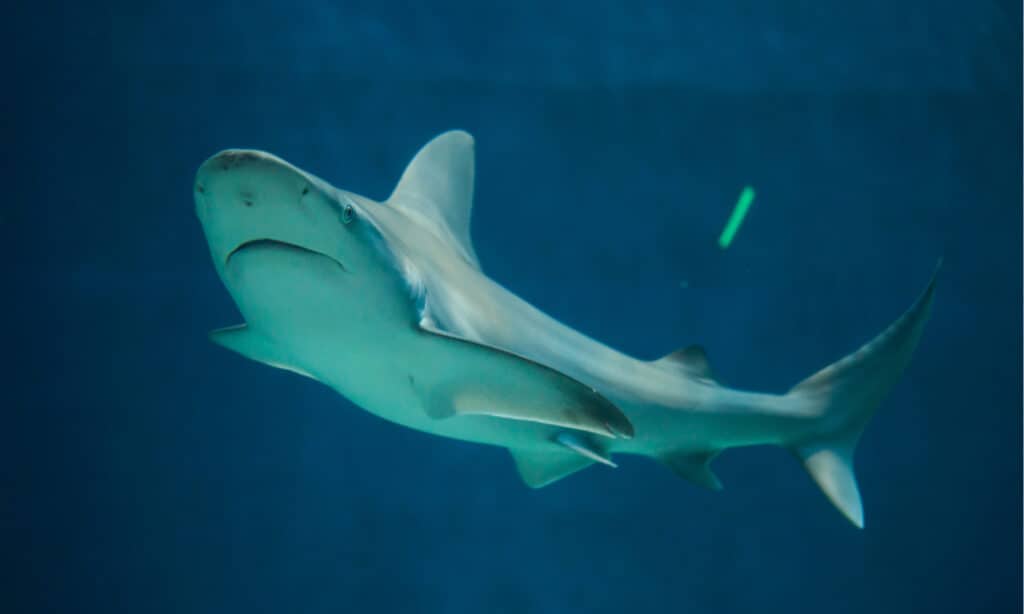
The sandbar shark is a medium-sized shark that is commonly found in Maryland’s oceans.
©Vladimir Wrangel/Shutterstock.com
The mid-Atlantic coast and the Chesapeake Bay are home to the sandbar shark, Maryland’s most commonly encountered shark. Interestingly, the Chesapeake Bay is also a crucial nursery area for sandbar sharks along the East Coast.
The sandbar shark has a rounded snout and saw-like triangular teeth, and it is identifiable by its brownish or dark gray body with a whitish underside.
Fortunately, the sandbar shark poses minimal threat to humans due to its preference for smaller prey and its tendency to avoid beaches and the water’s surface. That said, rare as it may be, sandbar shark attacks on humans have been reported. These sharks can grow to a relatively large size, reaching up to 8 feet, which means they can potentially be dangerous.
In 2021, a distressing incident occurred involving a 12-year-old girl from Pennsylvania who sustained a sandbar shark bite while in the waters of Ocean City, Maryland. The incident marked the first recorded “near-shore” shark encounter in the state that did not involve a person engaged in fishing activities.
2. Jellyfish (Scyphozoa)
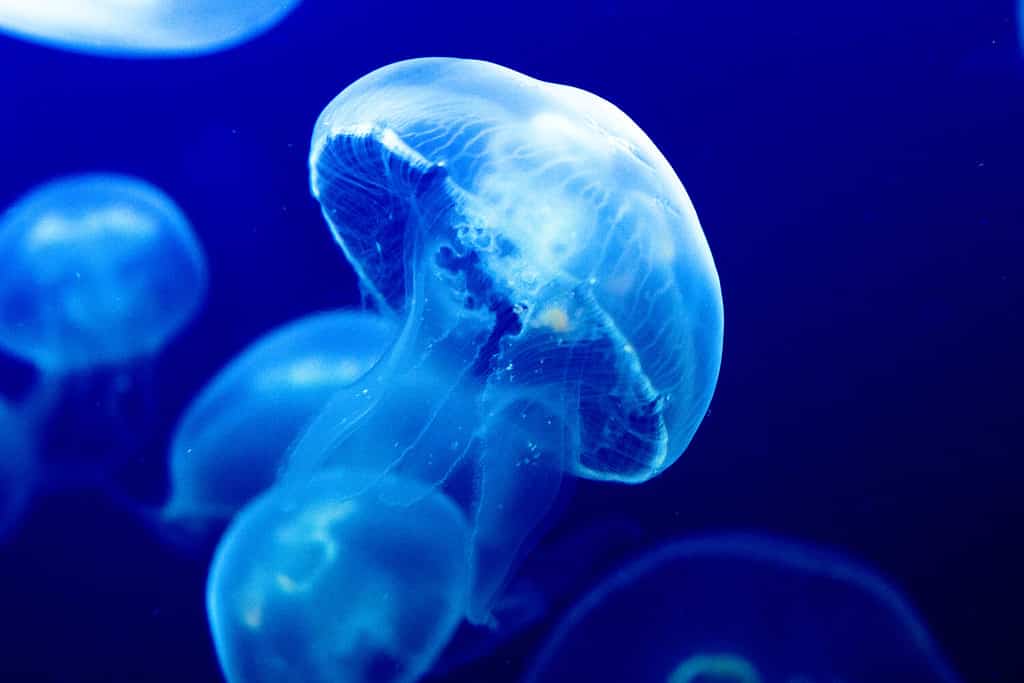
Jellyfish are one of the most common dangerous animals encountered worldwide.
©mishelo0/Shutterstock.com
Did you know that the Chesapeake Bay in Maryland is home to several different types of jellyfish? Some of the species you can find there are the lion’s mane jellyfish, moon jellyfish, and sea nettles. These jellyfish are among the most dangerous animals found in the ocean in Maryland.
These fascinating creatures can be transparent or display shades of pink, yellow, blue, and purple.
Jellyfish are notorious for their stinging ability. They use their thousands of microscopic barbed stingers to inject venom as a defense mechanism. When stung, most people experience immediate pain and develop inflamed marks on the skin. In some cases, jellyfish stings can lead to more severe systemic illness or, in rarer cases, life-threatening situations.
The box jellyfish, in particular, is responsible for approximately 100 deaths worldwide each year, making it one of the most dangerous jellyfish species. Luckily, there are no box jellyfish in Maryland.
Shockingly, an estimated 150 million people globally suffer jellyfish stings each year. While shark attacks tend to capture the headlines, jellyfish actually cause eight times more fatalities annually. Despite their seemingly harmless appearance, jellyfish can be highly poisonous, and their translucent nature often makes them difficult to spot and avoid.
3. Lionfish (Pterois)

Lionfish are invasive in Maryland and have detrimental effects on the ocean environment, they are also toxic and can harm humans.
©bearacreative/Shutterstock.com
As water temperatures rise in Maryland, certain invasive species, like lionfish, have been making their way to the area or thriving there. Not only are they invasive, but they also pose a significant danger as one of the most dangerous animals in Maryland’s oceans.
Lionfish have a distinct appearance with maroon or brown coloration and striking white bands or stripes covering their body and head. They possess fleshy tentacles below their mouth and above their eyes, as well as long, separated dorsal spines and fan-like pectoral fins.
While lionfish may be visually appealing, it’s important to be cautious around them. Their fins and spines can deliver a powerful sting, resulting in localized pain, redness, and swelling. Although incidents of humans being stung by lionfish are uncommon and rarely fatal, their venom is potent, making them potentially dangerous.
Exercising care and avoiding contact with these creatures in Maryland’s oceans is imperative.
4. Stingray (Myliobatoidei)
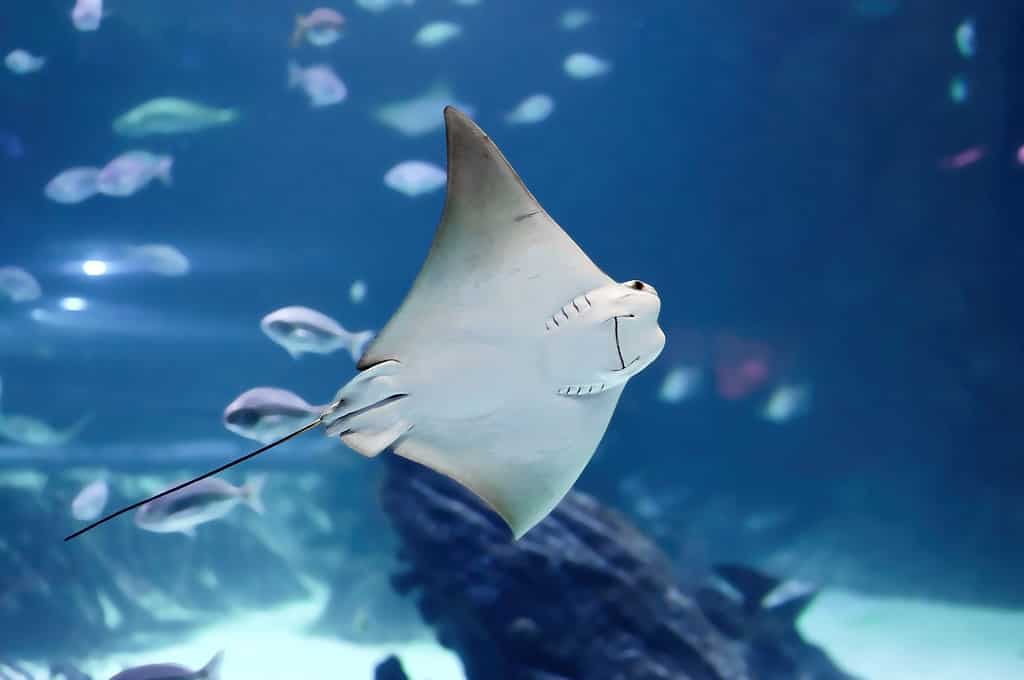
Stingrays are amazing creatures that can be extremely dangerous as they have a venomous spin on their tails.
©BlackFarm/Shutterstock.com
You can come across both skates and rays in Maryland’s Coastal Bays, but it’s important to note that these two fish are entirely different. While skates are harmless, stingrays are not!
Many people in my generation have the potential danger of stingrays engrained in their brains from the tragic death of Steve Irwin, who was killed when a stingray pierced his heart.
These creatures have a distinctive disk-shaped body with a flexible, tapering tail equipped with one or more saw-edged, venomous spines in most species.
Contrary to their reputation, stingrays are actually shy and gentle creatures. They prefer to swim away rather than engage in a confrontation. They typically reserve their stingers for self-defense against their predators. However, this doesn’t mean they are not dangerous. Stingrays may attack humans only when they feel directly threatened, often unintentionally when someone accidentally steps on them.
Stingray stings can lead to serious infections or allergic reactions in some cases. If you experience a sting, clean the wound thoroughly and seek prompt medical attention. Despite the rarity of these attacks, there are still around 1,500 incidents per year in U.S. waters alone. Additionally, the pain caused by stingray venom is known to be exceptionally intense.
5. Atlantic Sturgeon (Acipenser oxyrinchus oxyrinchus)
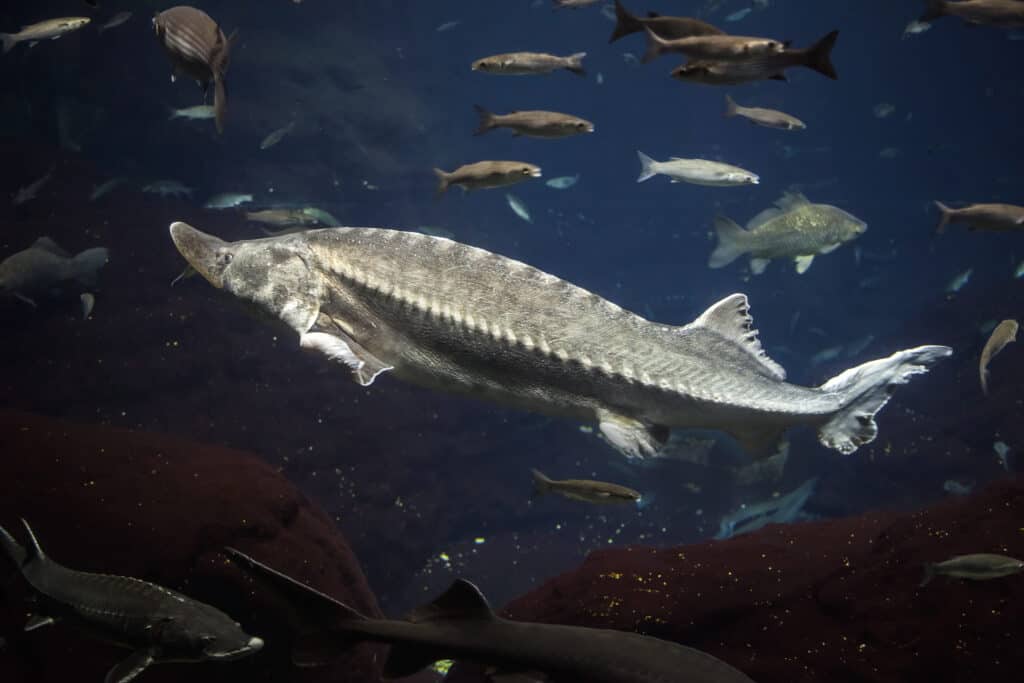
Atlantic
sturgeon
is a large fish species in Maryland that can be dangerous if they feel threatened.
©Evannovostro/Shutterstock.com
Due to overfishing and habitat degradation, the Atlantic sturgeon population in the Chesapeake Bay has declined drastically in recent years. However, there are still a few Atlantic sturgeons that can be found migrating out to sea and returning to their freshwater birthplace to spawn.
Atlantic sturgeon can reach impressive sizes, growing up to approximately 16 feet in length and weighing up to 800 pounds. They have a bluish-black or olive-brown color on their dorsal side (back) and a white belly.
Despite being generally non-aggressive fish, there have been reports of Atlantic sturgeons attacking boats, humans, and other animals. These attacks, which can cause severe injuries or even fatalities, are likely a result of the sturgeons feeling threatened or frightened.
It is undoubtedly impressive to witness an Atlantic sturgeon leaping out of the water, but this can be dangerous due to its large size and bony scutes. In the past, there have been accounts of sturgeons leaping near boats and accidentally knocking people over.
6. Bull Shark (Carcharhinus leucas)
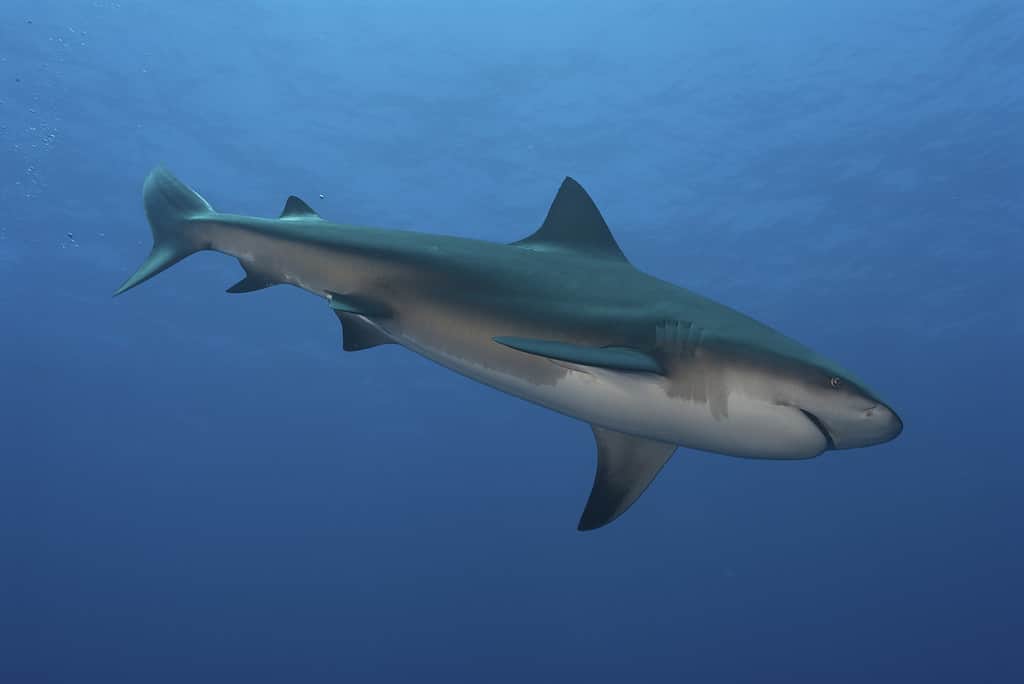
Bull Sharks are considered to be the most aggressive and dangerous shark species.
©iStock.com/FionaAyerst
Surprisingly, Maryland is home to 41 coastal shark species, including the notable (and aggressive) bull shark. These sharks can be found in certain parts of the Chesapeake Bay and are characterized by their robust appearance, thanks to a high width-to-length ratio.
Bull sharks are commonly encountered in warm coastal areas, whether in freshwater or saltwater. Many experts consider bull sharks the most dangerous in the world.
Their aggressive nature poses a significant risk to humans, primarily due to their preference for living near shorelines. Bull sharks have impressive jaw strength, with a bite force of around 6,000 newtons or approximately 1,300 pounds of force. In comparison, humans typically have a bite force ranging from 247 to 292 pounds.
While bull sharks do not actively seek out humans as prey, if an attack does occur, they often release their grip upon realizing that humans are not their usual prey.
Over time, there have been 117 reported incidents of human encounters with bull sharks, and tragically, 25 of those encounters resulted in fatalities.
7. Bluefish (Pomatomus saltatrix)

A potentially dangerous and aggressive fish species is the bluefish, which has razor-sharp teeth and is known to occasionally attack swimmers and fishermen.
©iStock.com/FtLaudGirl
Bluefish, a medium-sized fish, inhabits temperate and tropical coastal oceans worldwide, excluding the eastern Pacific. They form large schools organized by size, covering vast areas of the ocean that can be as extensive as 10,000 football fields. The appearance of a bluefish showcases a blue-green to deep blue color on its upper body, while its belly displays a silver-to-white hue.
Bluefish have very sharp teeth, and there is a risk for fishermen of bites when mishandling them. Adults can easily inflict severe bites that can even result in losing a finger.
Swimmers, although at a lower risk, have also experienced bluefish attacks. Instances have been reported where tourists from Poland, a couple from Montreal, and local youths were bitten on their arms and legs when hungry bluefish with razor-sharp teeth entered shallow water during a feeding frenzy. Fortunately, no serious injuries or hospitalizations were required.
In one incident in April 1976, a person lost an index finger, and 21 others received medical treatment after being chased by hungry bluefish through the surf. Fishing experts explain that these fish often mistake swimmers or surfers for mullets, as their fingers underwater look similar.
8. Portuguese Man O’ War (Physalia physalis)

With an extremely painful venomous sting, the Portuguese man o’ war is a dangerous animal in Maryland.
©Pedro Sales Prado/Shutterstock.com
The Portuguese man o’ war certainly lives up to its name, signifying the danger it poses. While it is commonly misclassified as a jellyfish, the Portuguese man o’ war is a species of siphonophore, not a jellyfish.
It is easily identified by its balloon-like float, which can rise to six inches above the waterline and comes in shades of violet, blue, or pink.
This Portuguese man o’ war is covered in venom-filled nematocysts, which it uses to paralyze and kill small fish and creatures it encounters. While its sting is incredibly painful for humans, it is rarely lethal. Upon contact with the skin, a man-of-war sting immediately produces a burning pain and redness.
In more severe cases, the affected area may form a red line accompanied by small white lesions. Additionally, blisters and welts resembling a string of beads can also emerge.
These dangerous animals can be found in Maryland’s oceans. So, if you encounter one, it’s best to maintain a safe distance and refrain from any direct contact! Otherwise, you may be subject to the painful consequences of its venomous sting. Even when the creature has died, its venom remains toxic and can cause harm for up to 48 hours!
9. Great White Shark (Carcharodon carcharias)
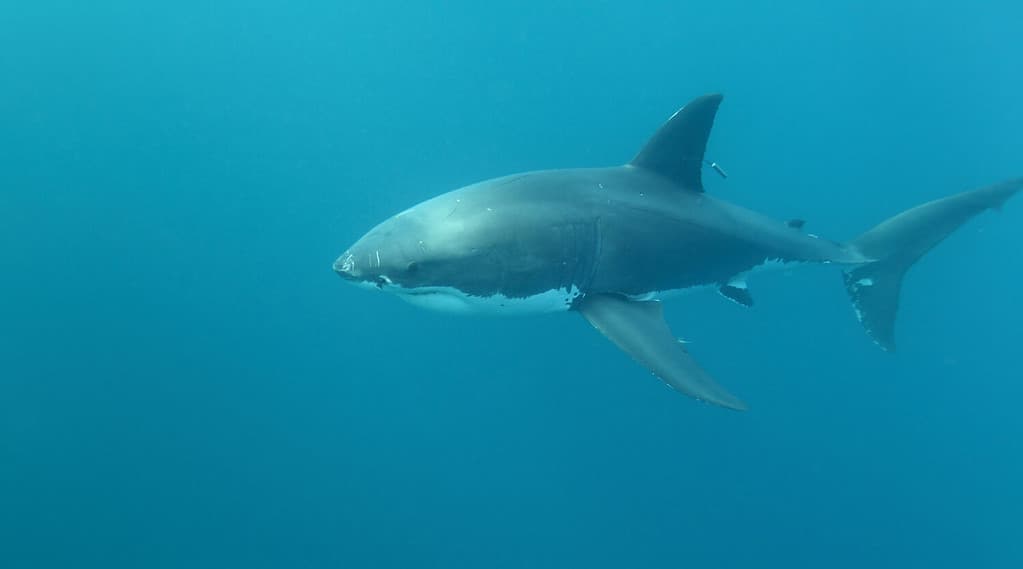
Great white sharks live up to their infamous reputation as they are the most common species for shark attacks and have resulted in the most casualties!
©Alessandro De Maddalena/Shutterstock.com
Considered the most dangerous shark species and definitely the most famous, the great white shark has a notorious history of numerous attacks, resulting in 52 fatalities. This is easily one of the most dangerous ocean animals in Maryland.
During the mid to late spring and mid-fall, great whites can be found in the coastal waters of Maryland. Their upper bodies have a slate-gray coloration that allows them to blend seamlessly with the rocky sea floor, while their name originates from their white underbellies.
It is important to note that when a great white shark encounters a swimmer or surfer from below, it may mistake them for its preferred meal—seals. Out of the 100-plus shark attacks that occur worldwide each year, a third to a half are attributed to great white sharks. Luckily, most of them are not fatal.
As highly specialized predators, great white sharks possess mouths lined with approximately 300 triangular, serrated teeth arranged in multiple rows. These sharp can cause devastating injuries, as a single powerful bite from a great white can be fatal.
10. Tiger Shark (Galeocerdo cuvier)

Tiger
sharks are another terrifying and deadly shark species that can be found in the oceans of Maryland.
©Michael Rothschild/Shutterstock.com
Completing the list of the most dangerous animals in Maryland’s oceans is the tiger shark, a familiar species in the state.
Tiger sharks get their name from the gray vertical stripes or spots adorning the sides of their bodies. As one of the largest shark species, they typically reach lengths of 10 to 14 feet.
Tiger sharks are known to be dangerous to humans for several reasons. Firstly, they primarily hunt in shallow waters, bringing them closer to areas where humans frequently swim. Additionally, their large size, scavenging nature, and mouth filled with serrated teeth contribute to their potential threat.
Similar to other sharks, tiger sharks continuously replace their rows of teeth throughout their lives.
In terms of recorded human fatalities, tiger sharks rank second only to the great white shark. They have attacked 138 humans, resulting in 36 fatalities.
Dangerous Animals Found Near Maryland’s Oceans
The danger is not only present in the oceans of Maryland but also on land! Here are some of the dangerous animals found near Maryland’s oceans.
1. Black Bear (Ursus americanus)
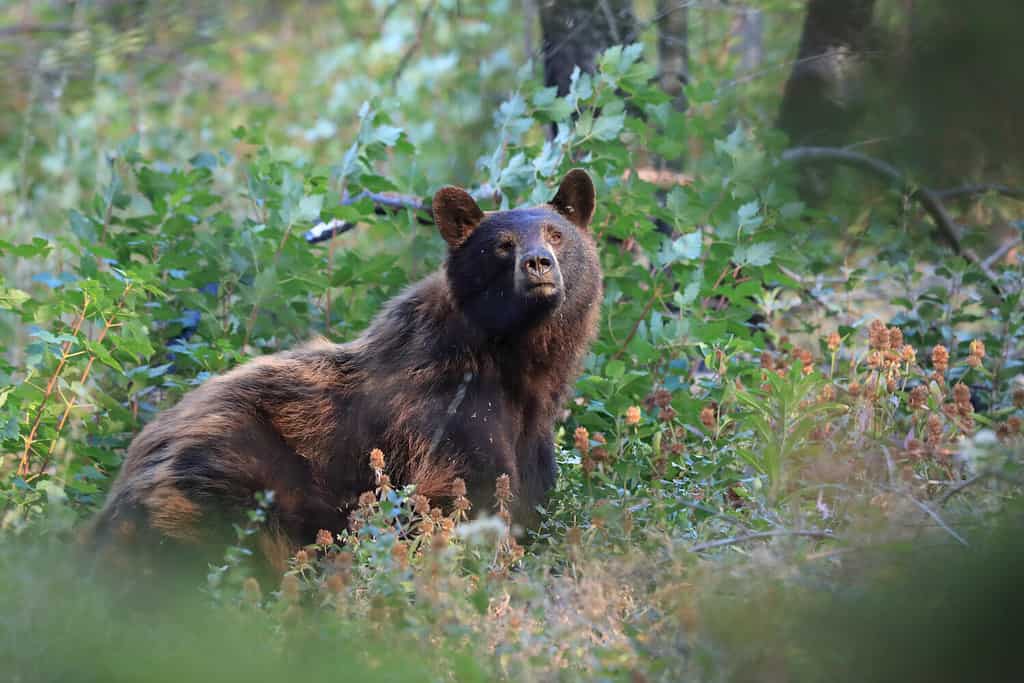
While not as dangerous as grizzlies, black bears still pose a threat to humans.
©Greens and Blues/Shutterstock.com
Black bear encounters near Maryland’s oceans are possible but rare. While only approximately one fatal black bear attack occurs annually in the entirety of the United States, it’s crucial to be prepared and aware. Black bears exhibit incredible strength, with a swipe force of about 560 pounds and a bite force of up to 800 PSI.
They are much stronger than humans and even surpass the strength of lions. This emphasizes the need to respect their power and exercise caution when around them.
2. Bald Eagle (Haliaeetus leucocephalus)

These majestic creatures are the national animal of the USA, but they have also been known to attack humans when they feel threatened!
©Marcy Herrick/Shutterstock.com
Bald Eagles can be found in Maryland throughout the year, often residing within two and a half miles of coastal areas, bays, or other bodies of water where their primary food sources are available. These animals, found near Maryland’s oceans, are potentially dangerous.
While there have been instances of bald eagles attacking humans, the resulting injuries are typically non-lethal. During mating seasons, bald eagles exhibit increased territorial behavior. So, it is important to keep your distance when bird watching.
Bald eagles possess powerful talons capable of gripping at over 300 pounds per square inch (psi). They also have large, sharp beaks for capturing and consuming prey. Their bills can penetrate the skin and cut through flesh, potentially causing significant harm if bitten.
3. Coyote (Canis latrans)

A common canine species that is widely distributed across the US, coyotes are a potential threat.
©Warren Metcalf/Shutterstock.com
Coyotes are widely distributed across Maryland, occupying various habitat types. While they are generally wild and tend to avoid human interactions, it is essential to recognize their potential danger.
Coyotes can pose a threat if they exhibit unusual behavior or show no fear of people. When this occurs, they may act like aggressive dogs, snarling, barking, or lunging. Instances where people were bitten usually involve attempts to rescue their pets from coyote attacks. Though rare, people may also be bitten by cornered or rabid coyotes.
Only two recorded incidents of human fatalities caused by coyotes have been documented in the United States and Canada.
Summary of the Most Dangerous Animals Found in Maryland’s Oceans
| Dangerous Animal | Scientific Name | |
|---|---|---|
| 1 | Sandbar Shark | Carcharhinus plumbeus |
| 2 | Jellyfish | Scyphozoa |
| 3 | Sea Urchin | Echinoidea |
| 4 | Lionfish | Pterois |
| 5 | Stingray | Myliobatoidei |
| 6 | Atlantic Sturgeon | Acipenser oxyrinchus oxyrinchus |
| 7 | Bull Shark | Carcharhinus leucas |
| 8 | Portuguese Man O’ War | Physalia physalis |
| 9 | Great White Shark | Carcharodon carcharias |
| 10 | Tiger Shark | Galeocerdo cuvier |
The photo featured at the top of this post is © iStock.com/Sean Craft
Thank you for reading! Have some feedback for us? Contact the AZ Animals editorial team.







